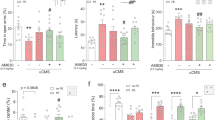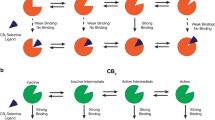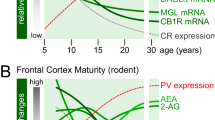Abstract
The ability to discern temporally pertinent environmental events is essential for the generation of adaptive behavior in conventional tasks, and our overall survival. Cannabinoids are thought to disrupt temporally controlled behaviors by interfering with dedicated brain timing networks. Cannabinoids also increase dopamine release within the mesolimbic system, a neural pathway generally implicated in timing behavior. Timing can be assessed using fixed-interval (FI) schedules, which reinforce behavior on the basis of time. To date, it remains unknown how cannabinoids modulate dopamine release when responding under FI conditions, and for that matter, how subsecond dopamine release is related to time in these tasks. In the present study, we hypothesized that cannabinoids would accelerate timing behavior in an FI task while concurrently augmenting a temporally relevant pattern of dopamine release. To assess this possibility, we measured subsecond dopamine concentrations in the nucleus accumbens while mice responded for food under the influence of the cannabinoid agonist WIN 55 212-2 in an FI task. Our data reveal that accumbal dopamine concentrations decrease proportionally to interval duration—suggesting that dopamine encodes time in FI tasks. We further demonstrate that WIN 55 212-2 dose-dependently increases dopamine release and accelerates a temporal behavioral response pattern in a CB1 receptor-dependent manner—suggesting that cannabinoid receptor activation modifies timing behavior, in part, by augmenting time-engendered patterns of dopamine release. Additional investigation uncovered a specific role for endogenous cannabinoid tone in timing behavior, as elevations in 2-arachidonoylglycerol, but not anandamide, significantly accelerated the temporal response pattern in a manner akin to WIN 55 212-2.
Similar content being viewed by others
Log in or create a free account to read this content
Gain free access to this article, as well as selected content from this journal and more on nature.com
or
References
Albin RL, Young AB, Penney JB (1989). The functional anatomy of basal ganglia disorders. Trends Neurosci 12: 366–375.
Anderson BM, Rizzo M, Block RI, Pearlson GD, O'Leary DS (2010). Sex, drugs, and cognition: effects of marijuana. J Psychoactive Drugs 42: 413–424.
Atakan Z, Morrison P, G Bossong M, Martin-Santos R, A Crippa J (2012). The effect of cannabis on perception of time: a critical review. Curr Pharm Des 18: 4915–4922.
Baldo BA, Sadeghian K, Basso AM, Kelley AE (2002). Effects of selective dopamine D1 or D2 receptor blockade within nucleus accumbens subregions on ingestive behavior and associated motor activity. Behav Brain Res 137: 165–177.
Bakshi VP, Kelley AE (1991). Dopaminergic regulation of feeding behavior: I. Differential effects of haloperidol microinfusion into three striatal subregions. Psychobiology 19: 223–232.
Barrett JE (1976). Effects of alcohol, chlordiazepoxide, cocaine and pentobarbital on responding maintained under fixed-interval schedules of food or shock presentation. J Pharmacol Exp Ther 196: 605–615.
Bossert JM, Poles GC, Wihbey KA, Koya E, Shaham Y (2007). Differential effects of blockade of dopamine D1-family receptors in nucleus accumbens core or shell on reinstatement of heroin seeking induced by contextual and discrete cues. J Neurosci 27: 12655–12663.
Brady AM, O’Donnell P (2004). Dopaminergic modulation of prefrontal cortical input to nucleus accumbens neurons in vivo. J Neurosci 24: 1040–1049.
Bromberg-Martin ES, Matsumoto M, Hikosaka O (2010). Dopamine in motivational control: rewarding, aversive, and alerting. Neuron 68: 815–834.
Bromberg-Martin ES, Matsumoto M, Nakahara H, Hikosaka O (2010). Multiple timescales of memory in lateral habenula and dopamine neurons. Neuron 67: 499–510.
Buhusi CV, Meck WH (2005). What makes us tick? Functional and neural mechanisms of interval timing. Nat Rev Neurosci 6: 755–765.
Chaudhri N, Sahuque LL, Schairer WW, Janak PH (2009). Separable roles of the nucleus accumbens core and shell in context-and cue-induced alcohol-seeking. Neuropsychopharmacology 35: 783–791.
Cheer JF, Wassum KM, Heien ML, Phillips PE, Wightman RM (2004). Cannabinoids enhance subsecond dopamine release in the nucleus accumbens of awake rats. J Neurosci 24: 4393–4400.
Cheng R-K, Hakak OL, Meck WH (2007). Habit formation and the loss of control of an internal clock: inverse relationship between the level of baseline training and the clock-speed enhancing effects of methamphetamine. Psychopharmacology 193: 351–362.
Clark JJ, Sandberg SG, Wanat MJ, Gan JO, Horne EA, Hart AS et al (2009). Chronic microsensors for longitudinal, subsecond dopamine detection in behaving animals. Nat Methods 7: 126–129.
Coull JT, Cheng R-K, Meck WH (2010). Neuroanatomical and neurochemical substrates of timing. Neuropsychopharmacology 36: 3–25.
Coull JT, Hwang HJ, Leyton M, Dagher A (2012). Dopamine precursor depletion impairs timing in healthy volunteers by attenuating activity in putamen and supplementary motor area. J Neurosci 32: 16704–16715.
Cravatt BF, Giang DK, Mayfield SP, Boger DL, Lerner RA, Gilula NB (1996). Molecular characterization of an enzyme that degrades neuromodulatory fatty-acid amides. Nature 384: 83–87.
Cui G, Jun SB, Jin X, Pham MD, Vogel SS, Lovinger DM et al (2013). Concurrent activation of striatal direct and indirect pathways during action initiation. Nature 494: 238–242.
DeLong MR (1990). Primate models of movement disorders of basal ganglia origin. Trends Neurosci 13: 281–285.
Dews PB (1970). The theory of fixed-interval responding. In: Schoenfeld WN (ed). The Theory of Reinforcement Schedules. Appleton Century Crofts: New York, NY. pp 43–61.
Dreyer JK, Herrik KF, Berg RW, Hounsgaard JD (2010). Influence of phasic and tonic dopamine release on receptor activation. J Neurosci 30: 14273–14283.
Falk JL (1971). The nature and determinants of adjunctive behavior. Physiol Behav 6: 577–588.
Falk JL (1998). Drug abuse as an adjunctive behavior. Drug Alcohol Depend 52: 91–98.
Fegley D, Gaetani S, Duranti A, Tontini A, Mor M, Tarzia G et al (2005). Characterization of the fatty acid amide hydrolase inhibitor cyclohexyl carbamic acid 3′-carbamoyl-biphenyl-3-yl ester (URB597): effects on anandamide and oleoylethanolamide deactivation. J Pharmacol Exp Ther 313: 352–358.
Floresco SB, Todd CL, Grace AA (2001). Glutamatergic afferents from the hippocampus to the nucleus accumbens regulate activity of ventral tegmental area dopamine neurons. J Neurosci 21: 4915–4922.
Fry W, Kelleher RT, Cook L (1960). A mathematical index of performance on fixed-interval schedules of reinforcement. J Exp Anal Behav 3: 193–199.
Gallistel CR, Gibbon J (2000). Time, rate, and conditioning. Psychol Rev 107: 289.
Gibbon J (1977). Scalar expectancy theory and Weber’s law in animal timing. Psychol Rev 84: 279.
Han C, Robinson JK (2001). Cannabinoid modulation of time estimation in the rat. Behav Neurosci 115: 243.
Heien MLAV, Phillips PEM, Stuber GD, Seipel AT, Wightman RM (2003). Overoxidation of carbon-fiber microelectrodes enhances dopamine adsorption and increases sensitivity. Analyst 128: 1413–1419.
Hicks RE, Gualtieri CT, Mayo J Jr, Perez-Reyes M (1984). Cannabis, atropine, and temporal information processing. Neuropsychobiology 12: 229–237.
Ito R, Hayen A (2011). Opposing roles of nucleus accumbens core and shell dopamine in the modulation of limbic information processing. J Neurosci 31: 6001–6007.
Keithley RB, Mark Wightman R, Heien ML (2009). Multivariate concentration determination using principal component regression with residual analysis. Trends Anal Chem 28: 1127–1136.
Kelleher RT, Morse WH (1968). Determinants of the specificity of behavioral effects of drugs. Rev Physiol Biochem Exp Pharmacol 60: 1–56.
Killeen PR (1975). On the temporal control of behavior. Psychol Rev 82: 89–115.
Kravitz AV, Tye LD, Kreitzer AC (2012). Distinct roles for direct and indirect pathway striatal neurons in reinforcement. Nat Neurosci 15: 816–818.
Lieving LM, Lane SD, Cherek DR, Tcheremissine OV (2006). Effects of marijuana on temporal discriminations in humans. Behav Pharmacol 17: 173–183.
Long JZ, Li W, Booker L, Burston JJ, Kinsey SG, Schlosburg JE et al (2008). Selective blockade of 2-arachidonoylglycerol hydrolysis produces cannabinoid behavioral effects. Nat Chem Biol 5: 37–44.
Matell MS, Meck WH (2000). Neuropsychological mechanisms of interval timing behavior. BioEssays 22: 94–103.
McKearney JW (1974). Effects of d-amphetamine, morphine and chlorpromazine on responding under fixed-interval schedules of food presentation or electric shock presentation. J Pharmacol Exp Ther 190: 141–153.
McKearney JW (1982). Effects of dopamine uptake inhibitors on schedule-controlled behavior in the squirrel monkey. Psychopharmacology 78: 377–379.
Meck WH, Penney TB, Pouthas V (2008). Cortico-striatal representation of time in animals and humans. Curr Opin Neurobiol 18: 145–152.
Melis M, Pistis M, Perra S, Muntoni AL, Pillolla G, Gessa GL (2004). Endocannabinoids mediate presynaptic inhibition of glutamatergic transmission in rat ventral tegmental area dopamine neurons through activation of CB1 receptors. J Neurosci 24: 53–62.
Moreau de Tours J-J (1845) Du hachisch et de l'aliénation mentale. Études Psychologiques: Paris, France.
Morse WH, Kelleher RT (1970). Schedules as fundamental determinants of behavior. In: Schoenfeld WN (ed). The Theory of Reinforcement Schedules. Appleton Century Crofts: New York, NY. pp 139–185.
Narayanan NS, Land BB, Solder JE, Deisseroth K, DiLeone RJ (2012). Prefrontal D1 dopamine signaling is required for temporal control. Proc Natl Acad Sci 109: 20726–20731.
Olds ME (1982). Reinforcing effects of morphine in the nucleus accumbens. Brain Res 237: 429–440.
Oleson EB, Beckert MV, Morra JT, Lansink CS, Cachope R, Abdullah RA et al (2012). Endocannabinoids shape accumbal encoding of cue-motivated behavior via CB1 receptor activation in the ventral tegmentum. Neuron 73: 360–373.
O'Leary DS, Block RI, Turner BM, Koeppel J, Magnotta VA, Ponto LB et al (2003). Marijuana alters the human cerebellar clock. NeuroReport 14: 1145–1151.
Pattij T, Wiskerke J, Schoffelmeer AN (2008). Cannabinoid modulation of executive functions. Eur J Pharmacol 585: 458–463.
Phillips PE, Stuber GD, Heien ML, Wightman RM, Carelli RM (2003). Subsecond dopamine release promotes cocaine seeking. Nature 422: 614–618.
Robbins TW, Koob GF (1980). Selective disruption of displacement behaviour by lesions of the mesolimbic dopamine system. Nature 285: 409–412.
Smith CB (1964). Effects of d-amphetamine upon operant behavior of pigeons: enhancement by reserpine. J Pharmacol Exp Ther 146: 167–174.
Spealman RD, Goldberg SR, Kelleher RT, Goldberg DM, Charlton JP (1977). Some effects of cocaine and two cocaine analogs on schedule-controlled behavior of squirrel monkeys. J Pharmacol Exp Ther 202: 500–509.
Tart CT (1970). Marijuana intoxication: common experiences. Nature 226: 701–704.
Tinklenberg JR, Roth WT, Kopell BS (1976). Marijuana and ethanol: differential effects on time perception, heart rate, and subjective response. Psychopharmacology 49: 275–279.
Wittmann M (2013). The inner sense of time: how the brain creates a representation of duration. Nat Rev Neuroscience 14: 217–223.
Acknowledgements
We thank Dr Lindsey Hamilton for helpful comments in the preparation of this manuscript.
Author information
Authors and Affiliations
Corresponding author
Additional information
Supplementary Information accompanies the paper on the Neuropsychopharmacology website
Rights and permissions
About this article
Cite this article
Oleson, E., Cachope, R., Fitoussi, A. et al. Cannabinoid Receptor Activation Shifts Temporally Engendered Patterns of Dopamine Release. Neuropsychopharmacol 39, 1441–1452 (2014). https://doi.org/10.1038/npp.2013.340
Received:
Revised:
Accepted:
Published:
Issue date:
DOI: https://doi.org/10.1038/npp.2013.340
Keywords
This article is cited by
-
Clinical, Cognitive, and Neurobiological Correlates of Impaired Timing Abilities Associate to Cannabis Use: a Systematic Review
International Journal of Mental Health and Addiction (2023)
-
Dopamine, behavior, and addiction
Journal of Biomedical Science (2021)
-
Inhibition of endocannabinoid degradation rectifies motivational and dopaminergic deficits in the Q175 mouse model of Huntington’s disease
Neuropsychopharmacology (2018)
-
Persistent effects of chronic Δ9-THC exposure on motor impulsivity in rats
Psychopharmacology (2015)



